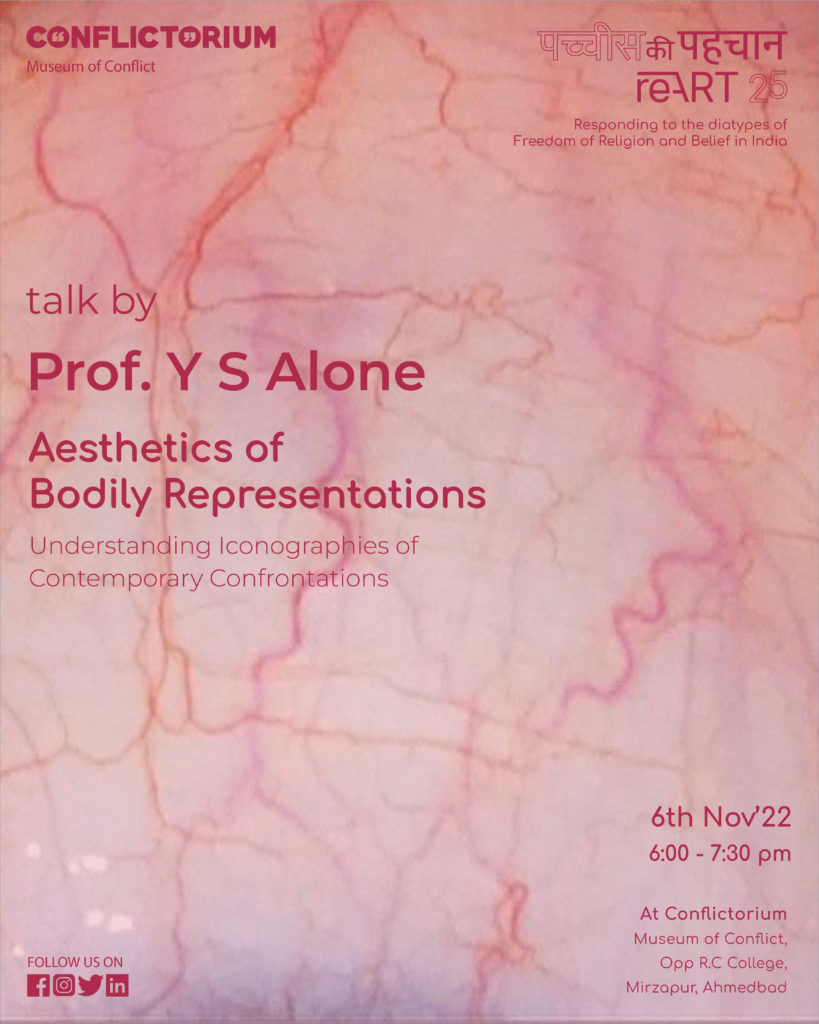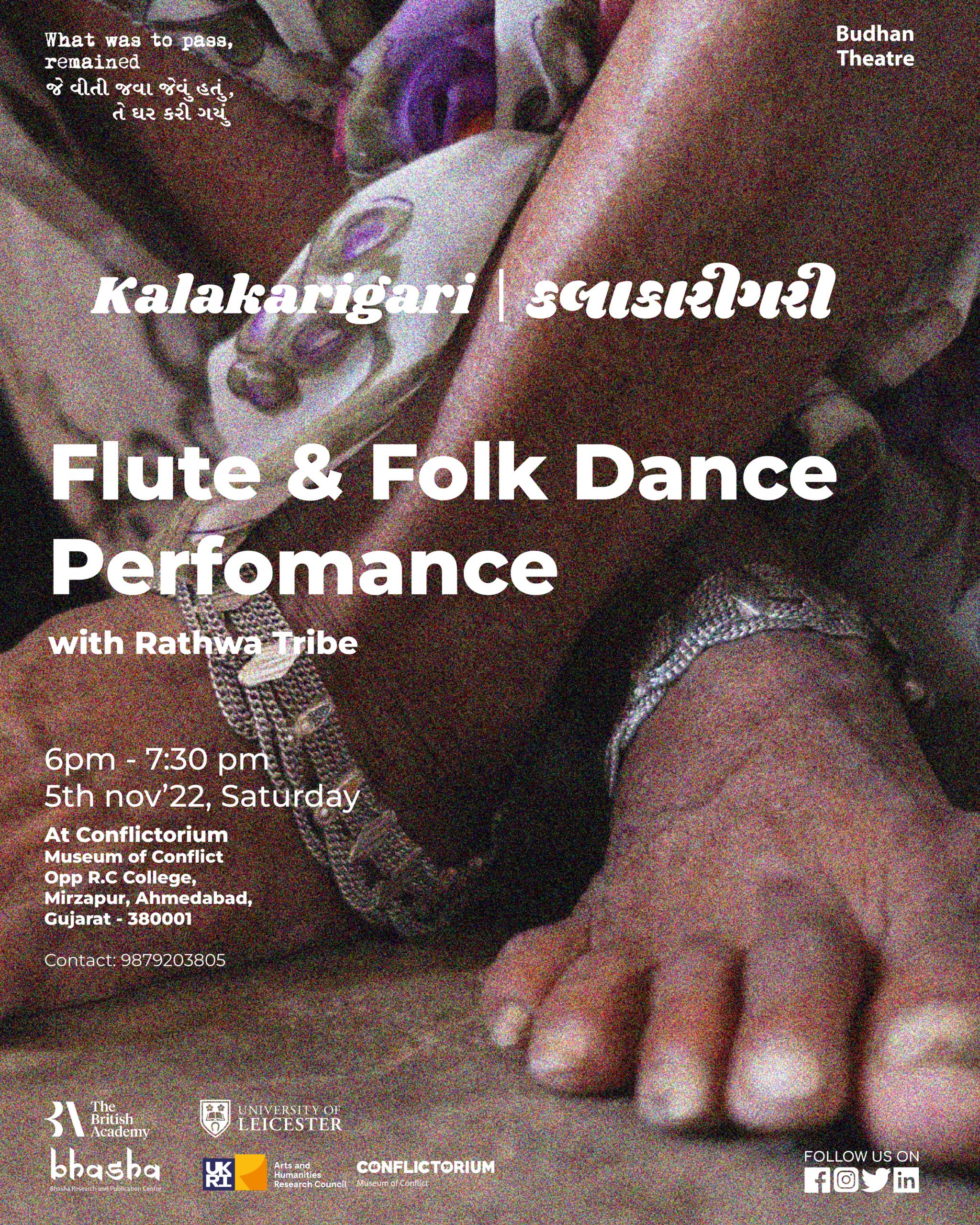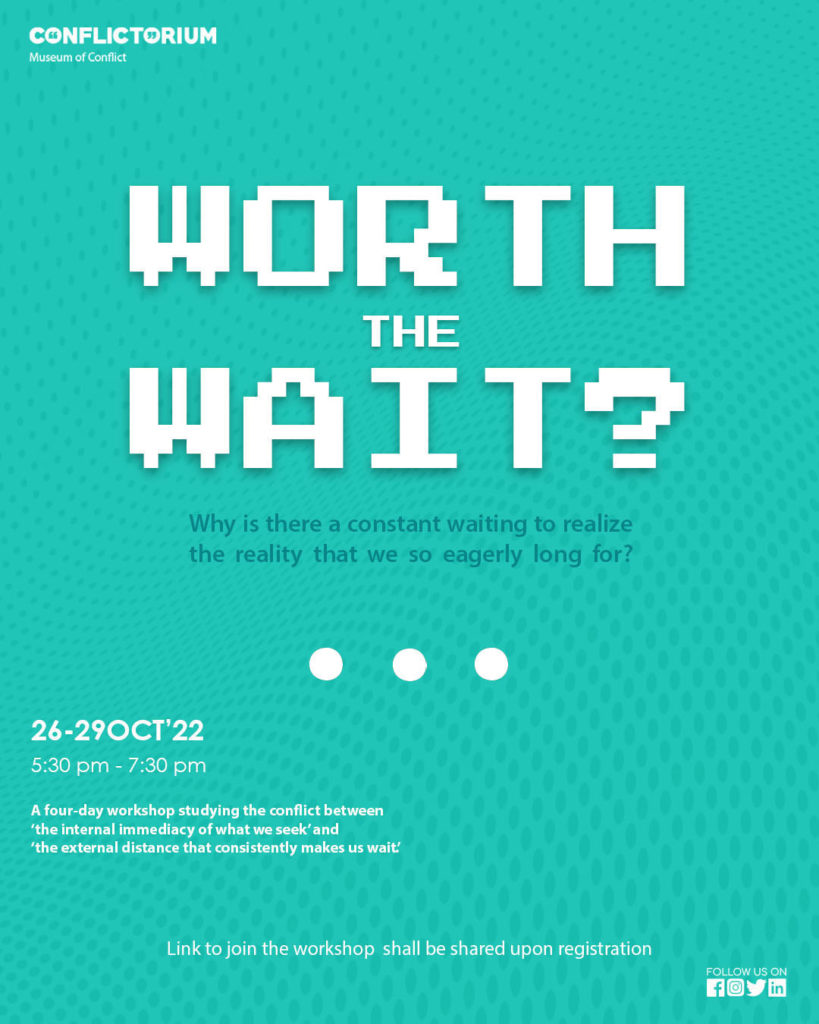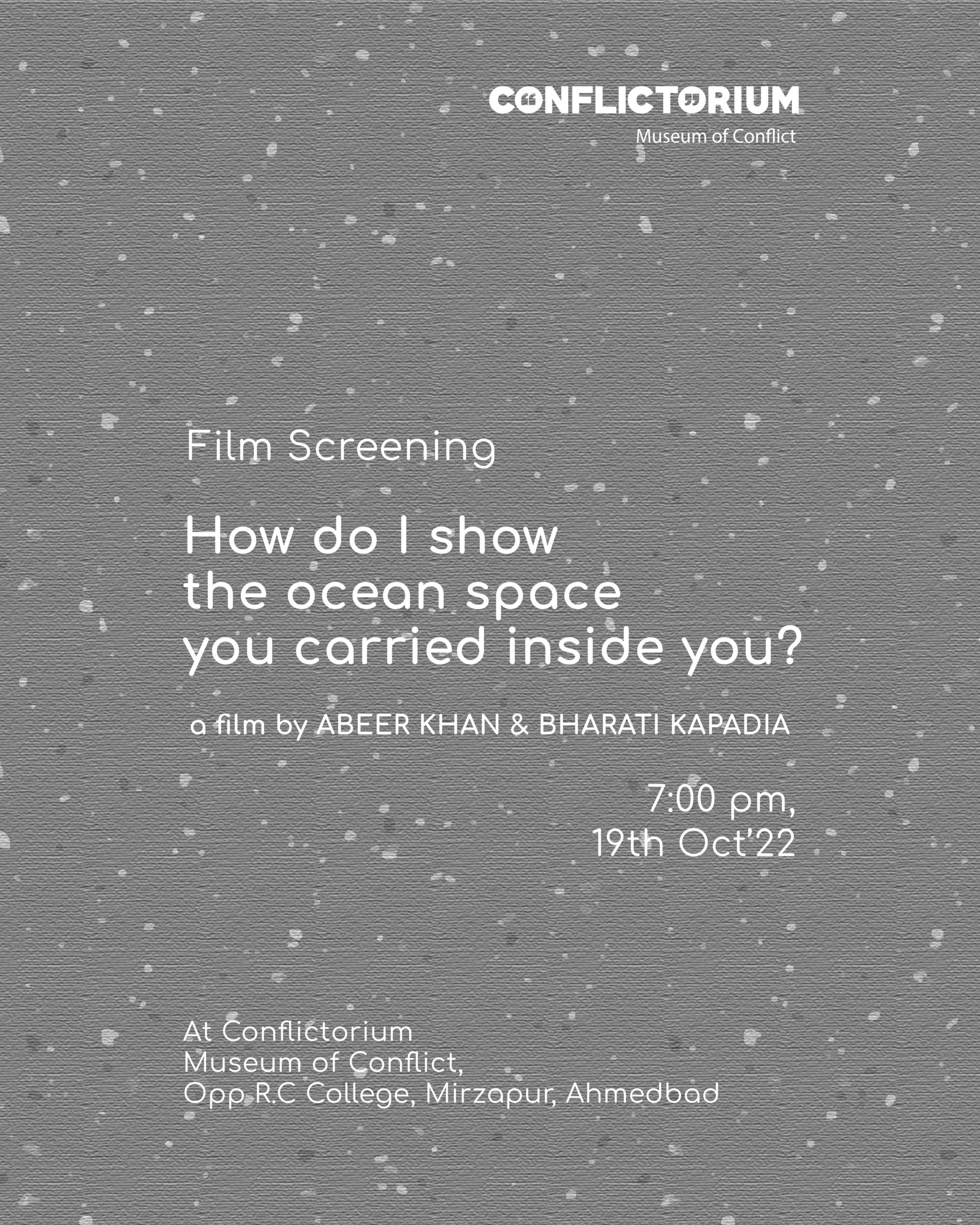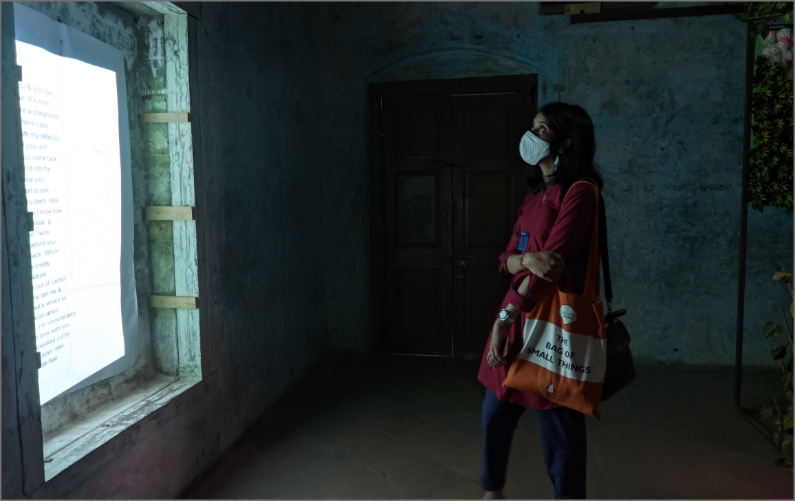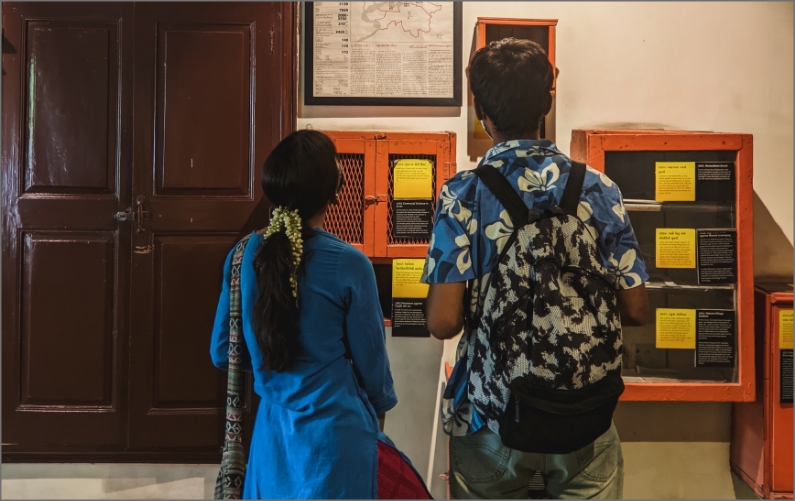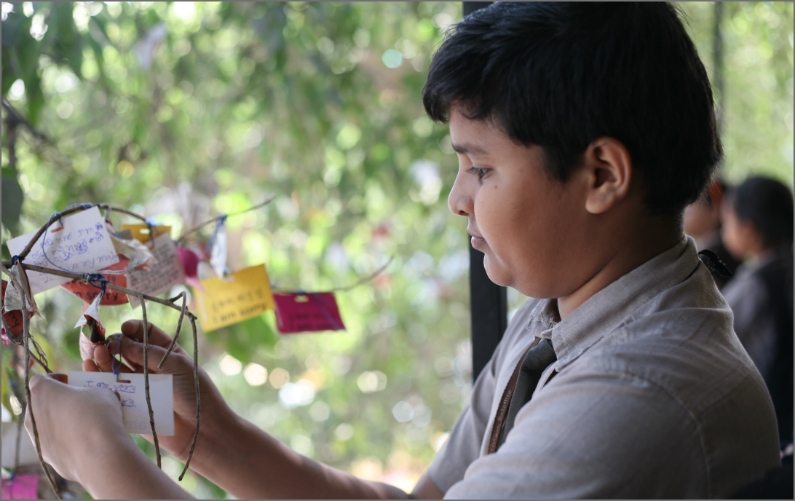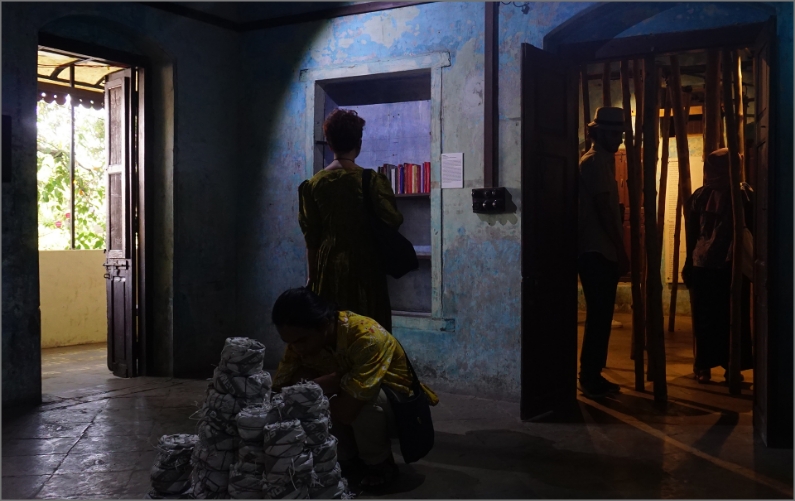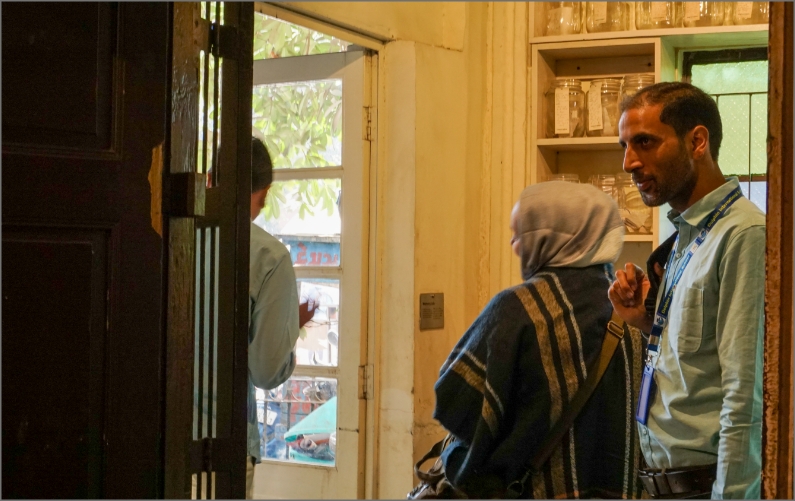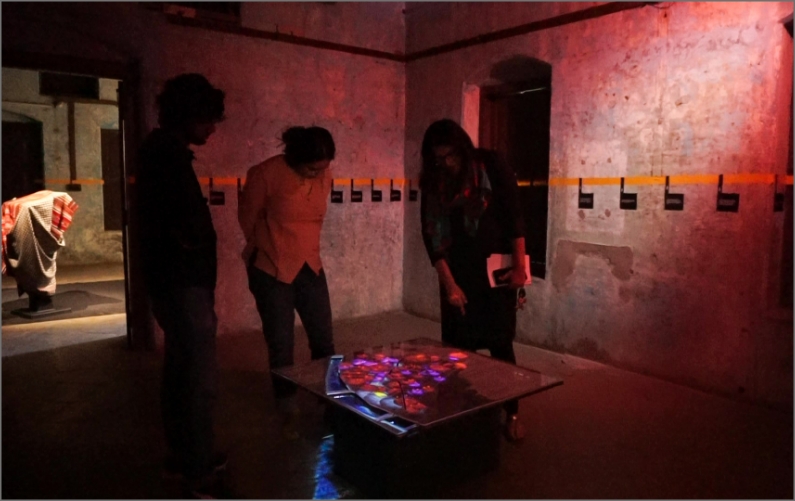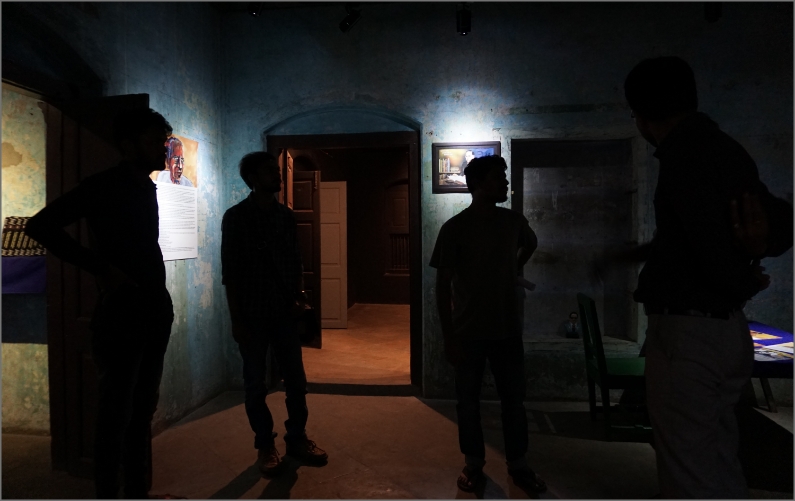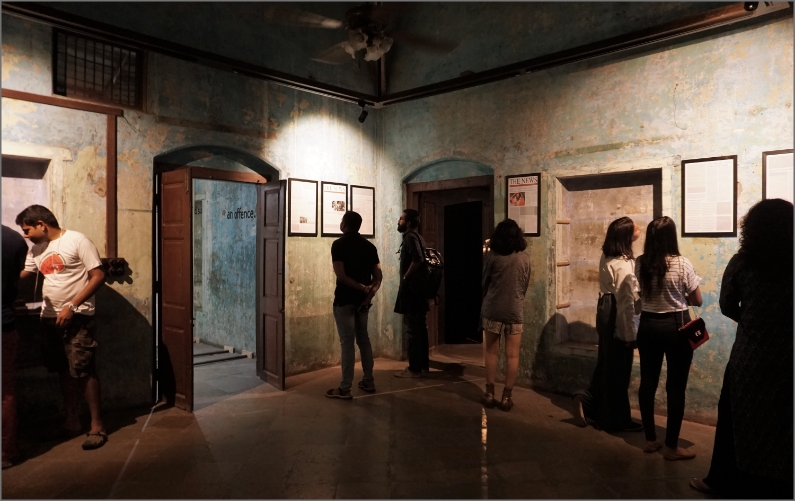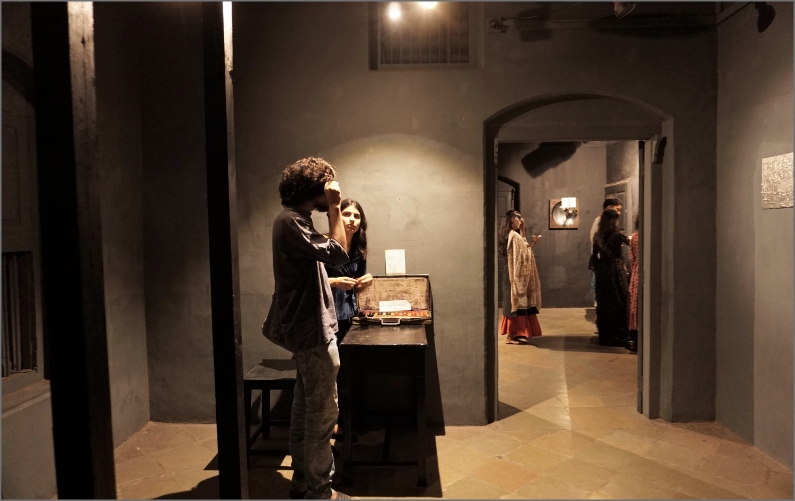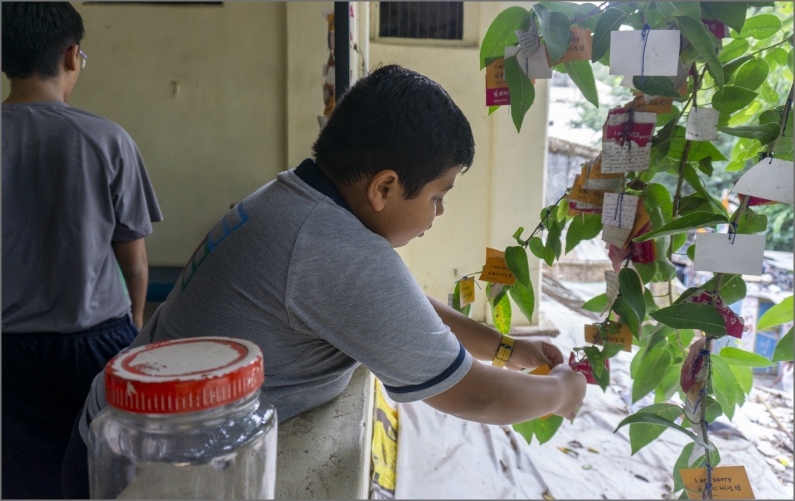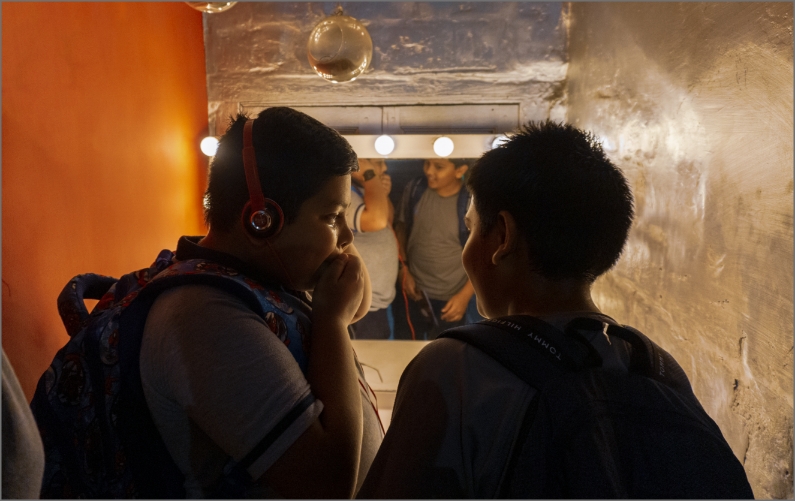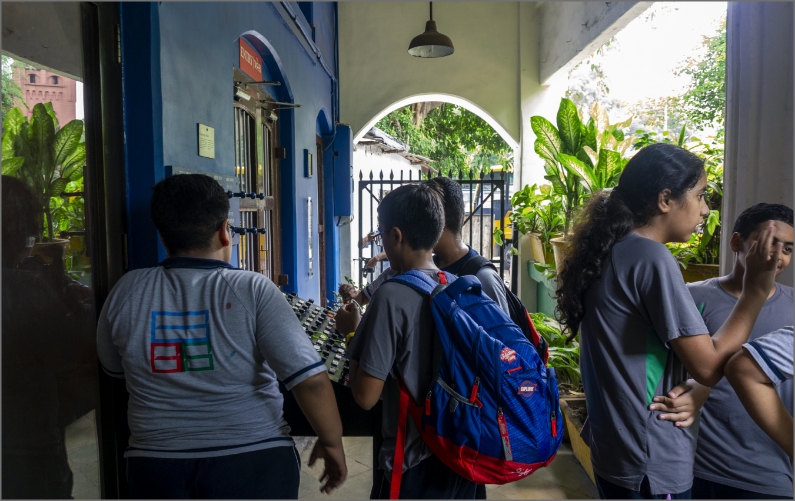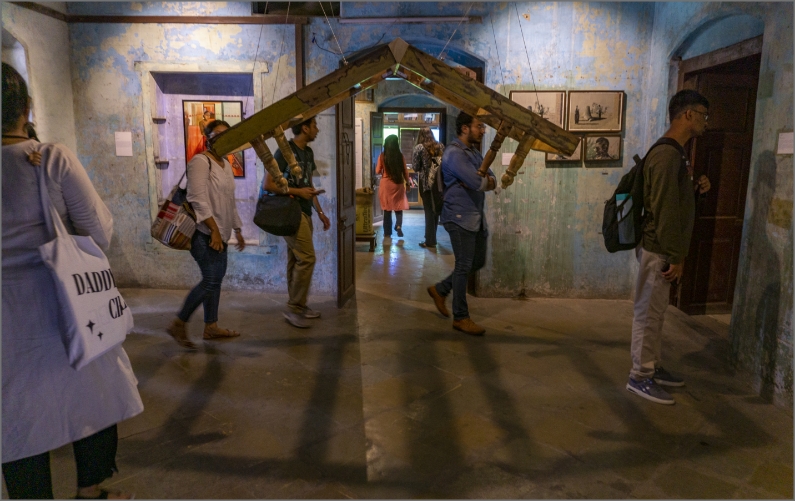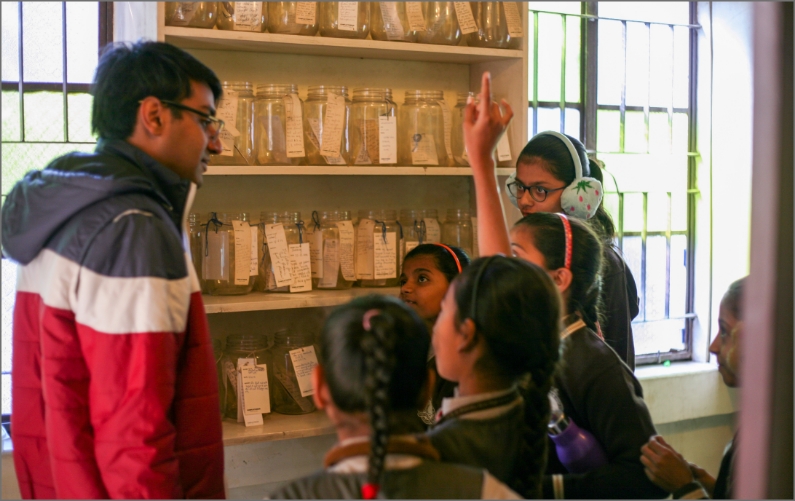Conflictorium is a participatory museum that addresses the ideas, questions and structures of conflict. With emphasis on art, audience and archives, where intersectional and interdisciplinary approaches to peace and conflict are explored, the museum tries to acknowledge the phenomenon of “conflict” as a key move in imagining a peaceful society.
While the idea of conflict conventionally refers to overt violences like war, the museum understands conflict as everyday tensions and disruptions that often manufacture and reveal the larger fears, shame and guilt operating to build miscommunications and boundaries between people.
 As we share memories and emotions, we bear witness together. Let’s not forget -James Nacthwey
As we share memories and emotions, we bear witness together. Let’s not forget -James Nacthwey 
“Conflictorium was a new experience for me. Starting with history and exploring society and in the end, reaching to be humble & fearless.” – Ashwin Misra
“My experience at Conflictorium has been very unique. The way conflicting point of views are portrayed & the experience created through the audiovisual installations is phenomenal.” – Tuhin Paul
“This was a wonderful experience. It made me think and has left a spark in me to spread this and use the concept with educators and school children.” – Rajesh Ranjit
“A place that talks back to me. You have captured the most difficult thought process and displayed it with such a beauty and wisdom.” – Asma Hussain
“This is one of the most unique display of art I have ever seen. Artwork that stem water to all our senses including some of the deepest emotions – Empathy. The subtlety of the concept is great. My compliments to everyone involved in this project.” – Namit Joshi

